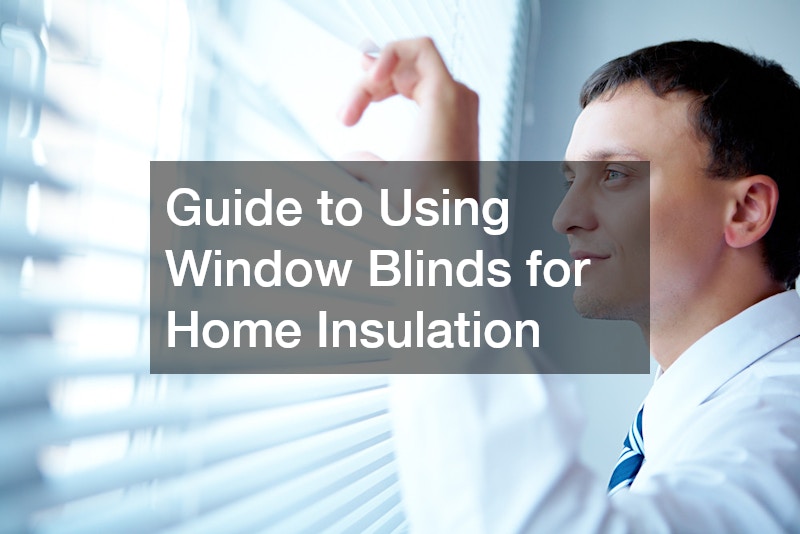Insulating your home effectively isn’t just about what’s inside the walls—your windows play a major role in heat loss and gain. Untreated windows can be one of the biggest sources of energy inefficiency in Australian homes. One practical and cost-effective solution is the strategic use of window blinds. With the right selection and placement, blinds can improve insulation, regulate indoor temperatures and reduce energy costs throughout the year.
Why Window Insulation Matters
Australia’s climate varies widely, from the cool winters of Tasmania to the humid summers of Queensland. Regardless of location, most homes rely on heating and cooling systems that can be costly to run if a property isn’t properly insulated. Windows are responsible for up to 40% of a home’s heating energy loss during winter and around 87% of heat gain during summer.
Insulating windows helps create a more stable indoor environment by reducing reliance on artificial climate control. Alongside double glazing, window coverings—especially blinds—can significantly improve thermal performance.
How Blinds Contribute to Insulation
Window blinds act as a thermal barrier between the glass and the interior of a home. When chosen carefully, they create an insulating layer that slows down heat transfer. In winter, this means trapping warm air indoors; in summer, it means keeping the heat out.
Not all blinds offer the same level of insulation. Their effectiveness depends on the material, structure and how well they fit. For optimal results, blinds should sit close to the window frame and cover the glass completely to limit air circulation between the blind and the window.
Types of Blinds for Better Insulation
Several types of blinds provide excellent insulation. Here are the most efficient options for Australian homes:
-
Honeycomb (cellular) blinds – These feature a unique cellular structure that traps air within the cells, creating a thermal barrier. Honeycomb blinds are among the most effective insulating blinds available and come in single or double-cell options for enhanced performance.
-
Roman blinds – Made from thick fabric, Roman blinds offer both style and function. When lined with thermal or blackout materials, they can help block heat loss and gain.
-
Roller blinds – While not as inherently insulating as honeycomb or Roman styles, roller blinds can still improve thermal comfort when fitted well and paired with blockout or thermal fabrics.
-
Venetian blinds – Though not as effective on their own, when used in combination with curtains or other treatments, they can offer moderate insulation and allow precise light and airflow control.
To maximise the effect, look for blinds designed specifically for energy efficiency. Fabrics with reflective backings or thermal linings help deflect heat and keep interiors cooler during hot months.
Best Practices for Using Blinds as Insulation
Using blinds effectively involves more than just installation. Daily use patterns and seasonal adjustments can significantly affect performance:
-
Close blinds at night during winter – This helps trap warmth inside and prevents heat loss through the glass.
-
Open blinds on sunny days – Letting sunlight in during the day naturally warms rooms, particularly those with a northerly aspect.
-
Lower blinds during peak summer hours – Blocking out direct sunlight during the hottest part of the day reduces indoor temperatures and keeps cooling costs down.
-
Ensure a snug fit – Gaps between the blind and window frame allow airflow, which reduces insulation. Consider using side channels or pelmets to seal in warmth or cool air.
Blinds should also be part of a larger insulation strategy. Combining them with sealed window frames, proper roof insulation and floor coverings leads to a noticeable improvement in indoor comfort year-round.
Energy Savings and Environmental Impact
Using blinds to improve insulation can significantly reduce energy consumption. Lower heating and cooling usage not only cuts power bills but also decreases household emissions. For eco-conscious homeowners, this is an easy step toward a more sustainable lifestyle.
Many Australian households report noticeable reductions in energy costs after upgrading window treatments. Blinds can also help extend the life of heating and cooling appliances by reducing strain and frequency of use.
Style Meets Function
One of the biggest advantages of using blinds for insulation is the ability to blend function with aesthetics. With a wide range of colours, materials and styles available, homeowners can select options that complement their interiors without sacrificing performance.
For modern or minimalist spaces, sleek roller blinds with thermal fabrics offer clean lines and subtle insulation. Heritage homes may benefit from the classic look of Roman blinds or layered treatments combining blinds with drapes. The key is to choose blinds that suit both the décor and the practical needs of the space.
With proper installation and daily use habits, blinds become more than just a decorative feature—they’re a valuable tool in creating an energy-efficient home. Whether you’re renovating, building new or simply looking to cut energy costs, investing in high-quality, insulating blinds is a decision that pays off all year round.
.



